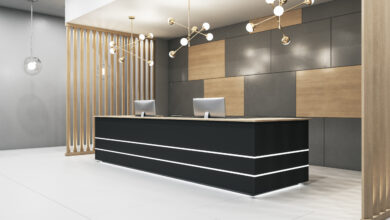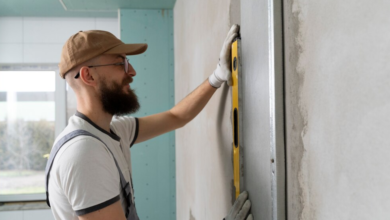How to Compare Cement Prices in Bangladesh for Maximum Savings

In the construction industry, where the cost of materials can significantly impact a project’s budget, selecting the right cement at the best price is crucial. Whether you are building a home, commercial space, or infrastructure, cement costs can make up a substantial portion of the total project cost. Therefore, understanding how to compare cement prices in Bangladesh for maximum savings can help builders and contractors stretch their budgets without compromising on quality.
This article will provide a step-by-step guide on how to effectively compare cement prices in Bangladesh, highlight key factors that affect pricing, and offer tips on how to maximize savings while ensuring that you are using high-quality materials for your construction projects.
1. The Importance of Choosing the Right Cement
Cement is the foundation of nearly every construction project. It provides the binding material in concrete, which is essential for building strong, durable structures. However, not all cement is created equal, and the price you pay can vary widely depending on several factors. Choosing the right cement at the right price is crucial for the overall success and longevity of your project.
Understanding what influences cement prices in Bangladesh will give you the insight needed to make informed purchasing decisions, helping you find the balance between cost and quality.
2. Factors That Affect Cement Prices in Bangladesh
Before diving into how to compare prices, it’s important to understand the factors that influence the cost of cement in Bangladesh. Knowing these factors will help you evaluate the offers from different suppliers more effectively.
1. Raw Material Costs
Cement is made from raw materials like limestone, clay, and gypsum, which can fluctuate in price depending on market conditions. In Bangladesh, some of these materials are sourced locally, while others are imported. Changes in the cost of these raw materials, particularly clinker (an essential ingredient in cement), can lead to fluctuations in cement prices.
2. Energy and Fuel Prices
Cement production is energy-intensive, with factories requiring significant amounts of fuel and electricity to operate. Increases in fuel prices, such as coal or natural gas, can lead to higher production costs, which are passed on to the consumer in the form of higher cement prices.
3. Transportation Costs
In Bangladesh, transporting cement from factories to construction sites can add a significant cost, especially if the site is in a remote location. Fuel prices and logistical challenges can affect the final price of cement by region, making it more expensive in areas far from manufacturing plants.
4. Brand Reputation and Quality
Top cement brands like Mir Cement are known for producing high-quality products that meet stringent international and local standards. As a result, they may charge a premium compared to lesser-known brands. However, paying more for a reputable brand often translates into better performance, longevity, and fewer maintenance costs in the long run.
5. Market Demand and Supply
Like any commodity, cement prices fluctuate based on supply and demand. During periods of high construction activity, such as the dry season or when large government projects are underway, cement prices may rise due to increased demand. Conversely, prices may drop when demand slows down.
3. Step-by-Step Guide to Comparing Cement Prices in Bangladesh
With a clear understanding of the factors influencing cement prices, the next step is learning how to compare prices effectively. Here’s a step-by-step guide to help you navigate the process and make the most cost-effective choice for your project.
1. Identify Your Cement Needs
Before you begin comparing prices, determine the type and quantity of cement you need for your project. Different types of cement, such as Ordinary Portland Cement (OPC), Portland Composite Cement (PCC), or Sulphate-Resistant Cement, come at different price points based on their composition and performance characteristics.
Knowing exactly what type of cement is required for your project will allow you to narrow down your options and focus on comparing prices for the correct product.
2. Research Cement Brands and Suppliers
Once you know the type of cement you need, research various cement brands and suppliers in Bangladesh. Well-known brands like Mir Cement offer high-quality products that are trusted by professionals in the industry. Visit the websites of these brands, read product reviews, and consult with other builders or contractors for recommendations.
3. Request Quotes from Multiple Suppliers
To get an accurate comparison, request price quotes from multiple cement suppliers. Be sure to ask for bulk pricing if your project requires a large quantity of cement, as many suppliers offer discounts for bulk purchases.
Make sure the quotes include details such as:
- The type of cement being offered
- Unit price per bag (or ton)
- Delivery costs, if applicable
- Any available discounts or promotions
4. Compare Prices Based on Unit Cost
When comparing prices, it’s essential to look at the unit cost per bag or per ton of cement. This will give you a clear idea of how much each brand is charging for the same quantity of cement. Take into account any delivery fees or additional charges that may affect the final price.
For example, while one supplier might offer a lower price per bag, they may charge higher transportation fees, which could make another supplier more cost-effective in the long run.
5. Evaluate the Quality and Performance of Each Brand
While price is important, it’s equally important to consider the quality and performance of the cement. Opting for a cheaper brand that doesn’t meet industry standards could lead to higher costs down the road in terms of repairs or replacements. Choose a cement brand like Mir Cement, known for its strength, durability, and compliance with local and international standards.
When comparing prices, consider the reputation of the brand, the quality of the cement, and how well it performs in the field. Paying a bit more for a trusted brand may save you money in the long term by reducing the risk of structural issues and the need for costly repairs.
6. Factor in Sustainability and Green Building Requirements
If sustainability is a priority for your project, consider brands that offer eco-friendly cement options. Cement companies like Mir Cement have adopted green manufacturing practices that reduce the environmental impact of production. Eco-friendly cement may cost more upfront but can contribute to green building certifications and long-term savings in energy and resource use.
4. Maximizing Savings When Buying Cement
Once you’ve compared cement prices and selected the best option for your project, there are additional ways to maximize your savings without compromising on quality.
1. Buy in Bulk
Purchasing cement in bulk is one of the most effective ways to reduce costs. Suppliers often provide discounts for large orders, which can lead to significant savings over time. If your project requires a large quantity of cement, buying in bulk can help you secure a lower price per unit.
2. Plan Your Purchases According to Market Trends
As mentioned earlier, cement prices can fluctuate based on market demand. If possible, plan your purchases during periods of lower demand, such as the rainy season, when construction activity typically slows down. During these times, suppliers may offer discounts or promotions to boost sales.
3. Negotiate with Suppliers
Don’t be afraid to negotiate with your cement supplier. Many suppliers are willing to offer discounts, especially for large orders or long-term business relationships. If you’re purchasing cement for multiple projects or over an extended period, you may be able to negotiate a better price or secure additional savings through a long-term supply agreement.
4. Choose Local Suppliers to Reduce Transportation Costs
Transportation can significantly add to the cost of cement, particularly if your construction site is far from the manufacturing plant. To minimize transportation costs, choose local suppliers that are geographically close to your project site. This can help you save on delivery fees while still ensuring you get the quality cement you need.
5. Why Mir Cement is a Smart Choice for Maximum Savings
When it comes to balancing quality and cost, Mir Cement stands out as one of the best options in Bangladesh. Here’s why:
- Competitive Pricing: Mir Cement offers high-quality cement at competitive prices, making it an affordable choice for both small and large projects.
- Superior Quality: Known for its strength and durability, Mir Cement meets both local and international standards, ensuring long-lasting performance.
- Sustainable Practices: Mir Cement’s commitment to eco-friendly production means you’re choosing a product that not only saves you money but also supports sustainable construction practices.
- Reputation and Reliability: Mir Cement has a proven track record in the Bangladeshi construction industry, making it a trusted choice for contractors and builders.
Conclusion
Comparing cement prices in Bangladesh is a vital step in ensuring that you get the best value for your construction project. By understanding the factors that influence pricing, researching different brands, and requesting quotes from multiple suppliers, you can make an informed decision that balances cost and quality.
For builders looking to maximize savings while ensuring superior performance, Mir Cement offers a compelling combination of competitive pricing, high quality, and sustainability. By taking the time to compare prices effectively, you can reduce your project costs without compromising on the durability and longevity of your construction.





